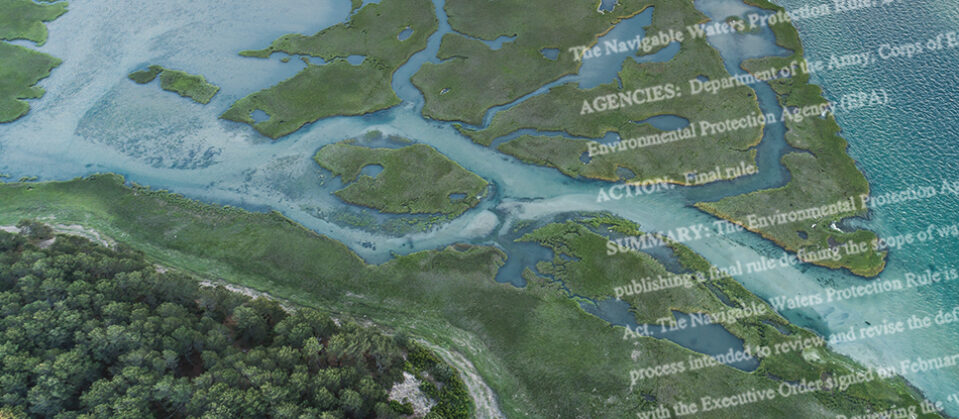Ideology Trumps Science in Clean Water Rollback
David J. Hayes (Past Executive Director) / February 6, 2020

The administration has issued a new rule that ends Clean Water Act protection for large portions of our nation’s wetlands, lakes and tributaries. Internal government documents estimate that more than half of our wetlands will lose protection under the rollback, exposing them to alteration or destruction. Likewise, nearly 20% of our nation’s streams, and an untold number of lakes, ponds and impoundments, will lose Clean Water Act regulatory and enforcement oversight that has been in place for decades.
The administration’s clean water rollback flies in the face of a rich body of science which confirms that wetlands and upland lakes and streams play a key role in watershed health, including in delivering clean water to our farms, towns and cities. By slashing clean water protection for these key resources, the administration is elevating ideology over science, discarding clean water protections that have been in place since Ronald Reagan’s presidency, and inviting land developers and industry to go “back to the future” and degrade our nation’s most precious asset: clean water. The EPA has added insult to injury by trying to slough off its clean water responsibilities onto states that are ill-prepared, under-resourced and, in some cases, without state authority, to fill a “gaping hole in water pollution control” of its own making.
Science, Water Quality & Clean Water Act Jurisdiction
Congress enacted the Clean Water Act to “restore and maintain the chemical, physical, and biological integrity of the Nation’s waters.” To effectuate this ambitious goal, courts have consistently concluded that Clean Water Act jurisdiction extends to upland water resources that impact downstream water quality. In the seminal Rapanos case, Justice Kennedy and four other Justices viewed impacts on downstream water quality — rather than geographic proximity — as the deciding factor when determining the scope of Clean Water Act jurisdiction. Justice Kennedy’s test was whether wetlands or other upland water features have a “significant nexus” — above and beyond a direct surface connection — to downstream waterways.
Building on this water quality-oriented jurisdictional test, the prior administration synthesized more than 1,200 peer-reviewed scientific reports encompassing “the current scientific understanding of the connections or isolation of streams and wetlands relative to large water bodies such as rivers, lakes, estuaries, and oceans.” Based on that analysis, and following consultation with EPA’s Science Advisory Board, EPA issued a rule in 2015 that reconfirmed Clean Water Act jurisdiction over upland water features that impact downstream water quality. The rule’s underlying scientific analysis largely reaffirmed existing jurisdictional practices, but it drew sharper, science-based lines to guide the identification of protected water bodies. And contrary to opponents’ claims, the 2015 rule involved only a minor potential expansion of jurisdictional waters, in the range of 3-5%.
Turning Back the Clock
The final rule released last month by the administration rejects the science- and water quality-based approach that has guided Clean Water Act jurisdictional determinations for more than 40 years.
In a complete about-face, and without citing any scientific basis, the administration has concluded that, with minor exceptions, Clean Water Act protections no longer attach to wetlands, lakes, ponds and impoundments that do not abut or otherwise have discernable surface connections with regularly-flowing streams — even when these water features help deliver clean water to downstream users.
Similarly and, again, without any scientific support, the final rule excludes so-called ephemeral streams (defined as streams that flow after rain or snow events) from the class of tributaries that receive Clean Water Act protection, even though these tributaries play a critically-important role in enhancing (or, if unprotected, damaging) downstream water quality. Indeed, so-called ephemeral streams comprise nearly 20% of all tributaries in the U.S., and 35-40% of tributaries in drier southwestern U.S. states.
In short, the EPA’s new rule radically rejects the legal and science-based protections that have ensured the delivery of clean water to Americans for decades. By turning back the clock to a time when wetlands and upland streams were routinely degraded or destroyed, the rule earns the dubious distinction of being the administration’s most environmentally damaging rollback yet... and that’s saying something.
